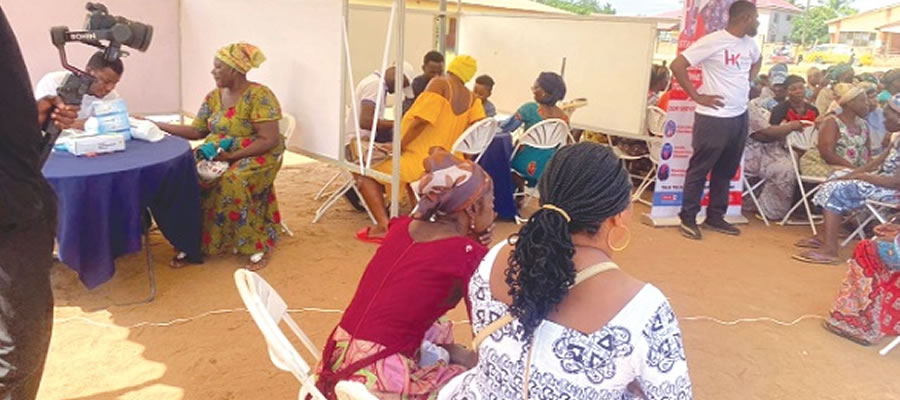

POPULATION SIZE AND DISTRIBUTION
Using the growth rate of 1.2%, the population is estimated at 33117, consisting of 15,896 males and 17,221 females in 2018. The rural population affects process of growth as illiteracy and ignorance hinder the capacities, capabilities and abilities of people to appreciate issues pertaining to development.
AGE-SEX STRUCTURE
A large proportion of the population is below 15 years with a small proportion of elderly (65 years and above). The percentage of males in the age group 0-14 years (38.2%) is higher than that of females (35%) while the percentage of females in the age group 15-64 years (59%) is higher than that of males, which represent (57.7%). Among the elderly, 65 years and older, the percentage of females (6.2%) is higher than that of males (4.4%). This is in conformity with what pertains in most places in world, where the females have long life expectancy. Table 2 presents the age structure of the population
By implication from the above table, less than one person depends on each active person in the District. This emphasizes the dominance of the active aged population who form 57.7% of the population of the District. Majority of this population is however rural characterized by youth, mostly unskilled less educated with no skills for employment.
MIGRATION
Migration may be defined as a change in place of abode or place of “usual” residence from one geographic division and taking up life in a new or different place in another geographic division. Out-migration is a common phenomenon in the District with mostly the youth migrating to the southern parts of the country to farm seasonally or seek greener pastures.
The low enrolment figures at the Junior High School (JHS) and Senior High School (JHS) levels are generally low because most pupils and students are unable to make the transition from Primary to JHS and from JHS to SHS due to poor performance in Basic Education Certificate Examination (BECE) and West Africa Senior Secondary School Certificate Examination (WASSCE).
To put this into perspective, the JHS and SHS enrolment figures for year 2020 is 20.92 and 30.36 respectively, while completion rate is 6.82 and 9.20 respectively. This results in the movement of most of the youth to southern Ghana to seek non-existent jobs.
The out-migration of the youth denies some of the communities the labor force needed to engage in Agriculture so as to improve household food security. The returnees from these trips in some cases acquire certain learnt attributes that are inimical to their personal growth, and could adversely impact the overall development of the District.
RELIGIOUS AFFILIATION
The major religious denominations in the District are Christianity (57.6%), Traditional (22.3%), Islam (17.1%), and people with no religious affiliation (2.7%). Within the Christian religion, the Catholics are in the majority (35.2%), followed by the Pentecostal/Charismatic (13.8%) and Protestants (5.3%) other Christians are 3.3 percent.
Date Created : 12/17/2024 12:00:00 AM









 facebook
facebook
 twitter
twitter
 Youtube
Youtube
 +233 593 831 280
+233 593 831 280 0800 430 430
0800 430 430 GPS: GE-231-4383
GPS: GE-231-4383 info@ghanadistricts.com
info@ghanadistricts.com Box GP1044, Accra, Ghana
Box GP1044, Accra, Ghana